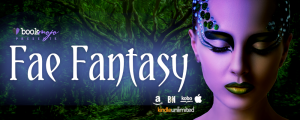writing
Group Projects
One good bit of writing advice I’ve heard is to pay attention to your own likes and dislikes. What are the story elements that catch your eye if you see them in a movie description or book blurb? Is there something that makes you think, “Ooh, yummy!” when you come across it? Pay attention to that feeling when you get it and try to figure out what it is that makes you feel that way, then try to determine why it gives you that feeling.
These are the elements you should use in your own writing. For one thing, that will make you more interested and invested in your own work. It’s more fun to write your own catnip. But it will also likely resonate more with others, since there are few things that are so specific that you’re the only person who likes them. That’s why you figure out the why, since nailing the reason you like a thing can allow you to use the reason even if you don’t use the specific thing.
This week I noticed a new one for me that I hadn’t realized before. I was watching a British documentary series in which a group of historians and archaeologists were spending a year on a 17th century English farm, trying to go through a year doing the things people would have done then, using the technology and techniques they would have used. They were taking things that they’d found in their studies and putting them to the test. The same people (mostly, the members of the group vary from series to series) have done similar series set in other time periods. There’s one in which they join that project in France where they’re building a medieval castle using period technology, one in which they live on a Tudor-era farm, a Victorian farm, an Edwardian farm, etc.
While I’m mostly interested in the history of it, I found myself getting caught up in the teamwork aspect. These people are having to do some really difficult things, often figuring them out as they go, but they all seem to be getting along, encouraging each other, and helping each other. I was fascinated by the dynamic, and seeing them working together was giving me warm fuzzy feelings. I found myself really hoping that this wasn’t just for the cameras, that they were becoming friends from working together. I’ve learned that when something really catches my interest like I should think about it, and I’m having to add “teamwork” to my list of things I like.
Which is weird because I dreaded group projects in school. But still, I seem to really enjoy team/group stories in which a group works together toward a common goal and becomes friends along the way. I think that’s probably because this is the fantasy of a group project, where everyone’s equally invested in the process and the outcome and really does work together and come to like each other, unlike almost any group project I’ve ever been a part of. In fiction, you can make it work that way (or when you only see the parts that are edited into the finished program — they’re probably not going to show these archaeologists cursing at each other because the way one of them thought something should have worked based on things found in digs turned out to be wrong).
My favorite part of The Lord of the Rings is The Fellowship of the Ring — the part before the party splits up, when they’re all working together. In fact, in just about any group/questing party/team fantasy series, I’ll lose interest when the party splits up. I loved the prison arc in season one of Andor because I liked that the prisoners all worked together on an escape plan. It wasn’t like your usual story in which the falsely accused hero is thrown into prison and has to survive against the vicious prisoners. These guys all worked together well and looked after each other. I guess this is connected to the “found family” trope in which a group of random people thrown together come to function like a family.
I haven’t written much of this in my books, mostly because it’s really hard to write a good team/group/ensemble cast in a novel. It’s like juggling, and I’ve never gotten the hang of juggling. I can’t toss and catch two balls at once, let alone keep a bunch of plates in the air and moving without dropping one. It’s a lot easier to focus on one or two characters than to keep a team moving.
This is also connected to that “community” thing I noticed when I was watching Christmas movies, where I was more interested in the characters finding and building communities than I was in romantic plot lines. I think I’m doing that with the Rydding Village books. I may focus on one character at a time, but I’m gradually building a community that will get bigger as I address more of the characters, and they’re all going to have to work together eventually.
I just started writing book 2 yesterday, so I can be conscious of using this element as I write it.

